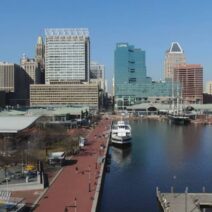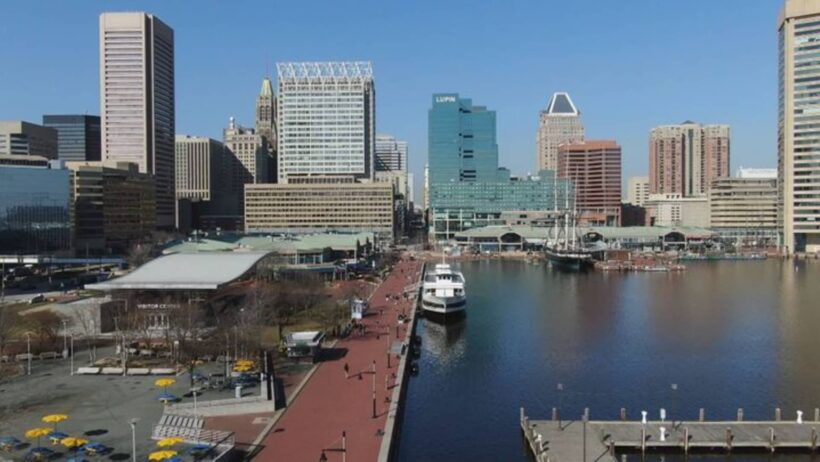The sun-soaked shores of Florida, celebrated for their pristine beaches and balmy climates, are under siege from a foe that lurks silently, yet menacingly within the depths of our ecosystem: rising sea levels. This quintessential paradise, a tapestry of picturesque landscapes woven with vibrant neighborhoods, faces an existential crisis that puts its very foundation on shaky ground. If you delve into the heart of the issue, you will discover an intriguing paradox: are Florida’s property values sinking along with its coastal land?
To understand this compelling phenomenon, one must first grasp the fundamentals of sea level rise. Driven by the warming of the Earth’s climate, primarily caused by human activities, this ecological threat manifests through the melting of polar ice caps and the thermal expansion of seawater. As glaciers retreat and oceans swell, coastal regions—particularly those as low-lying as Florida—find themselves clutching scraps of their once-robust habitability. This unsettling reality positions Florida squarely at the nexus of nature’s retribution, where property values face an inevitable reckoning.
The unique appeal of Florida, the land famed for its alluring real estate market, hinges on its geographical advantages. Its sunlit coastal living, breathtaking landscapes, and winter-time refuge for millions lure a constant influx of residents and tourists alike. However, as the specter of climate change looms larger, potential homebuyers are forced to navigate the treacherous waters of uncertainty. The very properties that once symbolized affluence and serenity are now tainted with apprehension about their fate. What was once an emblematic escape has now transformed into a cautionary tale.
As the tide of environmental impact rises, so too does the concern among prospective buyers about future property depreciation. A recent report elucidates the stark reality that many homes along Florida’s coasts are already experiencing a dip in demand. Just as a top-heavy boat teeters perilously on the cusp of sinking, properties in vulnerable areas are witnessing a palpable decline, as buyers converge on safer, higher ground. The fear of flood insurance and the threat of increased maintenance costs begin to cast their shadows over open houses and property listings.
Moreover, the concept of “climate gentrification” rears its head as homebuyers of means turn their backs on coastal properties afflicted by the encroaching sea. The allure of waterfront living still exists, yet a demographic shift can be observed as wealthier individuals gravitate towards elevated homes further inland—gentrifying those areas while leaving flood-prone neighborhoods in a state of decay. This shift raises critical questions regarding equity and environmental justice, as lower-income communities often bear the brunt of climate change, trapped in locations vulnerable to inundation.
Local governments are awakening to the growing crisis. Municipalities are grappling with the pressing imperative to bolster flood defenses and implement sustainable infrastructure to combat imminent threats. Future construction may embody adaptations such as raised buildings, enhanced stormwater drainage systems, and the establishment of green spaces designed to mitigate flood risks. While such measures aim to curb immediate damage, they also bring forth an ancillary question: will the inevitable cost of these adaptations drive property values even lower?
In the court of public opinion, the notion of risk has become multifaceted. For many, a home represents not merely a structure, but a sanctuary—an investment etched with memories and aspirations. Yet, within the dialogue surrounding the vulnerability of properties, it is vital to recognize the potentially robust resilience of Florida’s real estate market. There exists a historical precedent for recovery in the aftermath of natural disasters, as residents rally to rebuild after hurricanes and floods. Could this suggest that a similar resilience might manifest against the backdrop of climate change?
Date the proverbial ink—real estate agents are now advising sellers to adopt an astute perspective, advising to “sell high” before panic sets in. However, this cyclical caution may resonate with caution among buyers, as fluctuations in property values transform the market into a quagmire of uncertainty. With those who still see value in coastal properties caught in a tug-of-war between desirability and impending catastrophe, it remains essential that the Florida populace grapples with these tough conversations as they redefine their relationship to the land.
A critical component of addressing sea-level rise in Florida is fostering awareness about the importance of community engagement. The conversation must extend beyond individual financial stakes and encompass collective action cohesive with climate adaptation strategies. Local governments, organizations, and community members wield the potential to leverage their voices in condemning inaction while advocating for sustainable policies. Together, they can mobilize resources to secure not only the well-being of their surroundings but also their homes and livelihoods.
So, are Florida’s property values sinking with the rising seas? The answer is complex, a reflection of an environmental saga mired in uncertainty. While the allure of Florida’s idyllic waterfront living persists, encroaching climate realities loom large, reshaping narratives of desirability and market valuation. It is an intricate dance between nature’s fury and human resilience, and as communities confront this challenge, they must navigate their eventual course with foresight and unity. The future of Florida’s real estate landscape hinges on this delicate balance; its outcome undoubtedly entwined with the broader tapestry of environmental stewardship.






